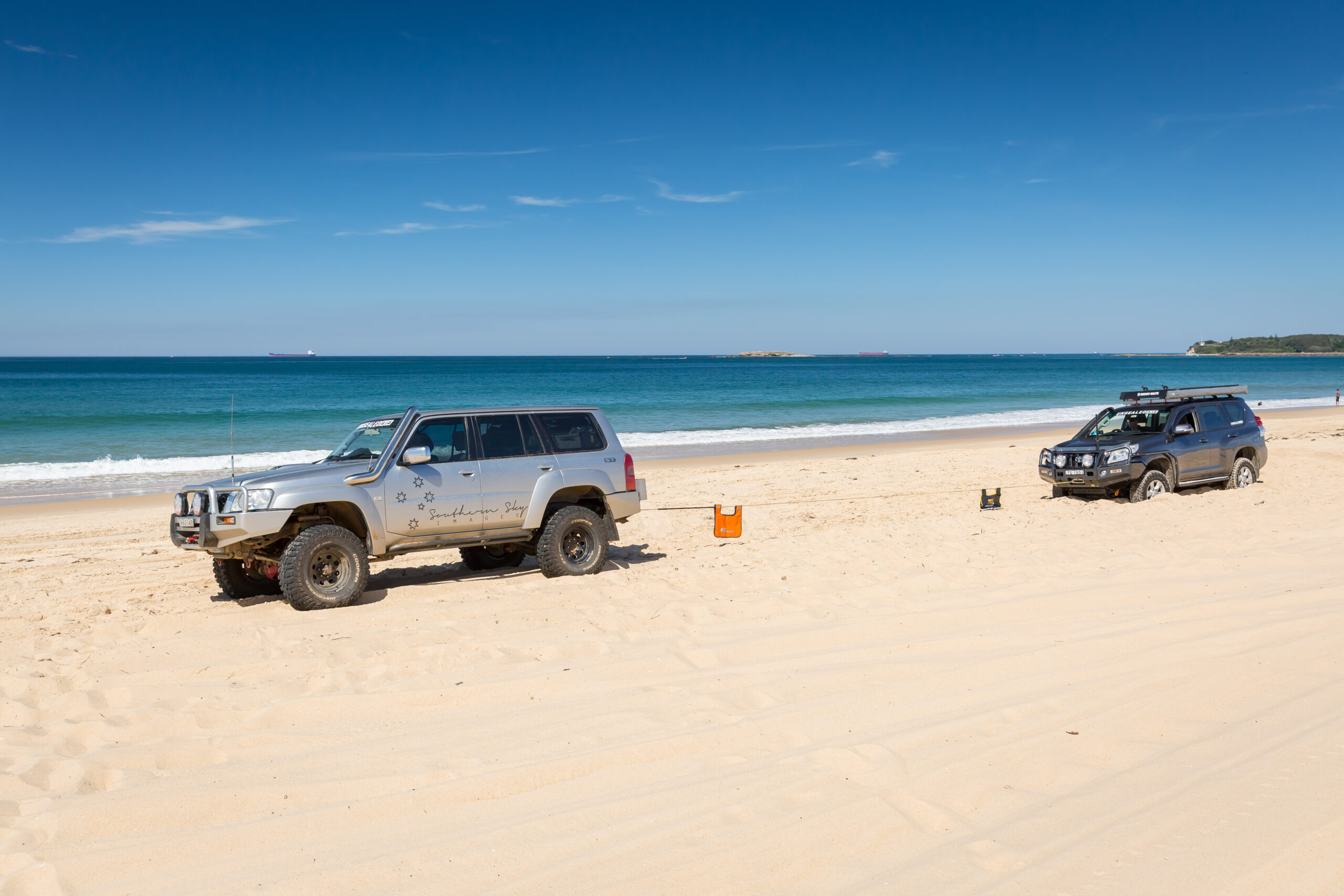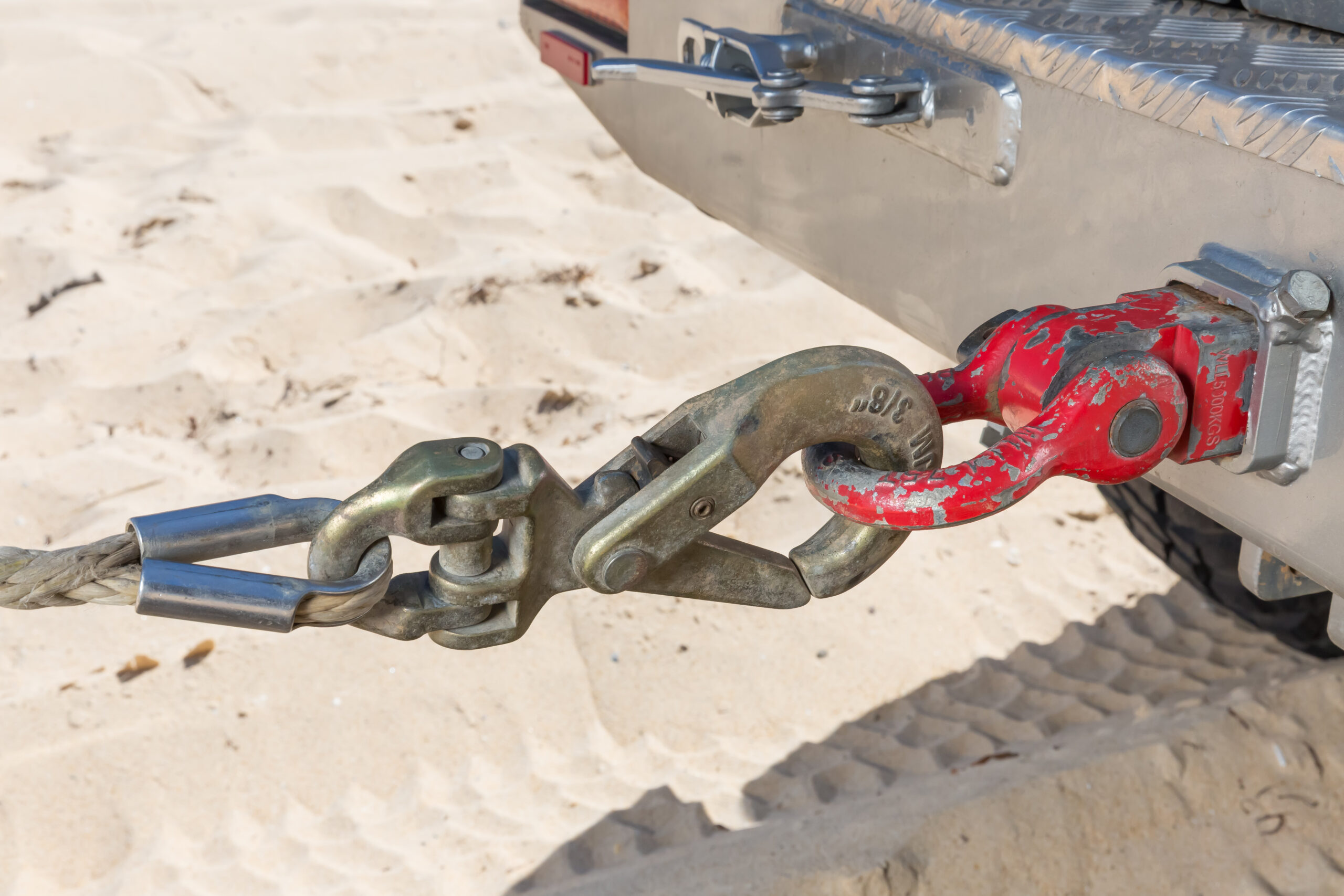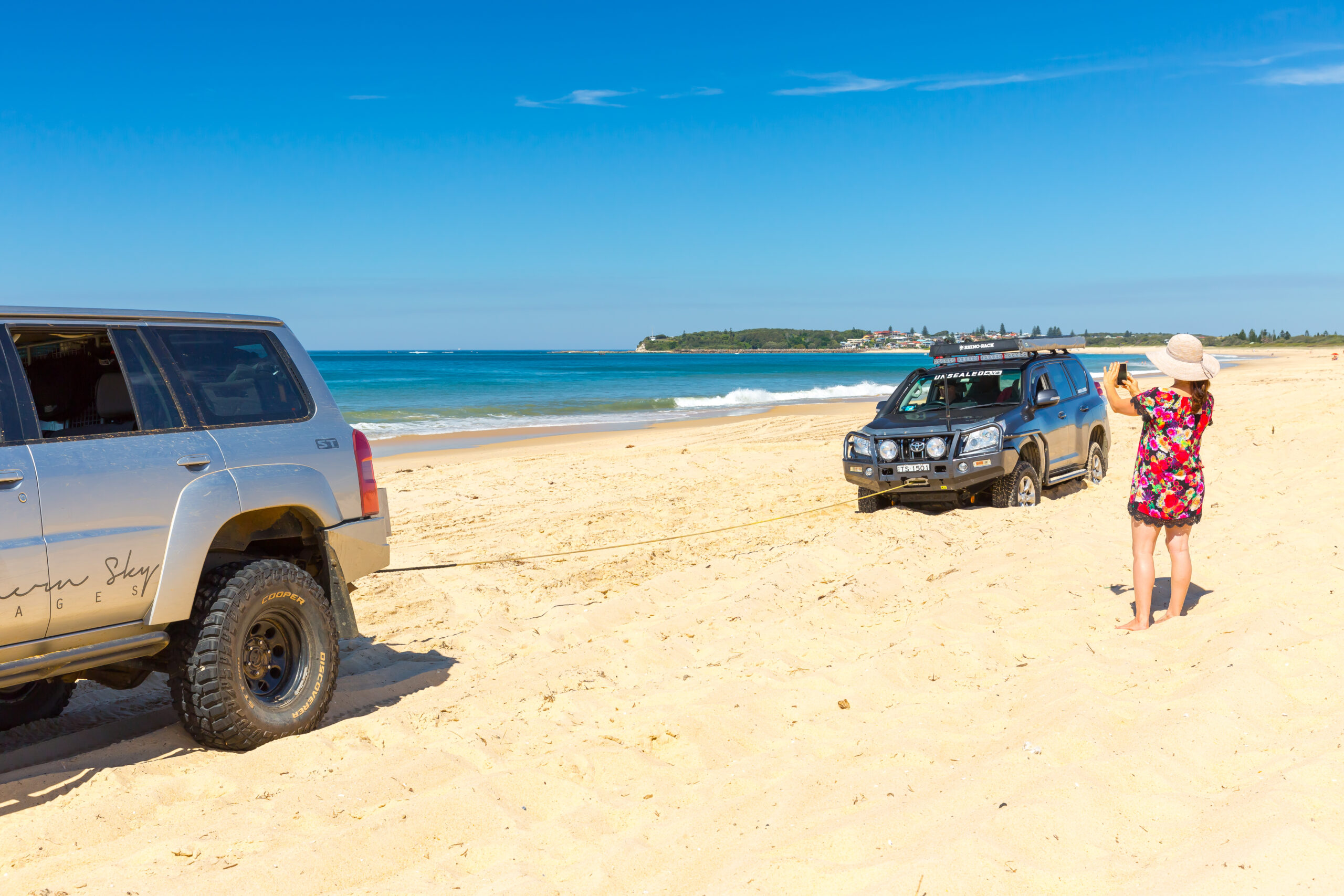For the vast majority of us, a winch is one of those ‘must have’ items, one of the first bits of kit on the list along with a bullbar and decent tyres. Unlike tyres, which are used every time we turn the key, a winch generally does not see much use – but when it’s really needed we are useless without one.
So with such little use it is easy to forget all the things we need to consider to get the job done safely and properly. Let’s break it down and have a look at the important fundamentals.

Do I even need to winch?
So you’re stuck, but do you even need the winch? In many cases, simply clearing around the tyres with the shovel or using rocks and timber to pack the track can eliminate winching completely. Even reducing tyre air pressure can get you out of a situation safely. If all this fails, then you should be doing these things anyway in order to assist the winch – remember the more strain on the equipment, the more potentially dangerous the operation is.

Do I have the required gear?
You have the winch; but do you have a good recovery kit? A lot of times you will need the ancillary equipment to connect safely to an anchor point. Is your tree trunk protector in good order (not frayed or damaged and complete with data tag); are the shackles rated (stamped with Work Load Limit or Safe Working Load); is your snatch block in good order; are you connecting to properly rated recovery points (if using another car as an anchor) and can you use a bridle to share the load?); is your winch rope or wire in good condition; and do you have sufficient cable dampeners (or air brakes) for the job?
These may seem like simple things we are checking here… but it is amazing how easy it is to overlook the basics during the excitement of a recovery. Checking your equipment beforehand is the key (not later, after it has failed).

Planning the winch recovery
Setting up and planning the winch operation is the next important aspect. What are you planning to use as a safe anchor point? A tree, another vehicle? Will the winch cable reach the anchor? Will you need to use an extension strap or will you need to reduce the load on the winch by performing a double-line pull? Spend the time now to plan it carefully.

Performing the recovery
Before commencing, double-check your connections. Ensure you have shovelled/packed and done everything you can to reduce the working load; and that you’ve identified and mitigated any hazards. Ensure that you have placed your cable dampeners at each end of the cable (approximately two metres from each end, and on each leg of the cable if you’re doing a double-line pull). Now for the really important bit before you hit the winch controller: Are all bystanders well clear? If you are not the one person in the vehicle operating the winch (or the person in control of the anchor point vehicle, if required) you have no place within the vicinity of the operation. As a rule, at least 1.5 times the distance away from the length of the recovery is the minimum safe distance for bystanders.
Once you have taken up slack in the cable, you may assist the winch by slowly applying gentle throttle in the stuck vehicle; but you must be very careful not to overrun the winch cable speed to create slack in the line. The resultant shock load when that slack is suddenly taken up again, if the vehicle suddenly rolls downhill or back into that mud hole, will likely overload the components and cause a breakage of some sort and potentially a very dangerous situation. If you are unsure of slack, do not turn the wheels and simply let the winch do the work.

Freeeeedom!
So now you have successfully carried out the recovery and the vehicle is safe. When packing away your equipment, spend the extra few seconds to inspect all of the gear you have used – checking carefully for damage. Any questionable items should be discarded, without exception. By carrying out regular inspections with new equipment you will learn to recognise when suddenly your gear looks damaged.
Some of the best hard-earned you could spend to enrol yourself in an approved recovery course.
As a qualified instructor with Getabout Training Services, I know first-hand that this guide is only that – a small part of what you should know in a limited number of words. The simple fact is there is no substitute for the hands-on knowledge and experience you will get out of a one-day winching course with qualified trainers. In order to cover all you really should know, we would have to dedicate several issues focused solely on winching safely – which would not make the mag the awesome read that it is. Courses are available right across Australia; so don’t just ‘think’ you know it all… there is no excuse – go out and learn it in a proper training environment.

Winching Safety
- Take the time to know your equipment. Know the ratings of each item and, yes, go and read that boring old manual that came with the winch.
- Watch a few recovery videos on the Internet and try to pick the errors – believe us there are a LOT of people out there doing it wrong!
- The loads and potential energy during any winching operation can be potentially fatal if something goes wrong. Take the time to plan the recovery; and ensure you inspect your equipment regularly.
- Use dampeners or ‘air brakes’ over winching ropes; multiple dampeners (two metres from EACH end, over joins and on each side of multiple-line pulls) should always be employed – a simple blanket or jacket can be used if required.
- Use only rated shackles and recovery points. Using a factory tie-down point or tow ball is a disaster waiting to happen.
- Never use a tow ball as a recovery point – it could fail and become a deadly missile.
- Keep bystanders away, at least 1.5 times the length of the recovery (three times the length is even better).
- Inspect your gear for damage before and after each use.
- Do not exceed equipment Work Load Limits (WLLs).
- Always use tree trunk protectors, if required.
- If you would like to improve your skills and learn advanced techniques, book in for an accredited winch recovery course. You will seriously be amazed at what you will learn.

Handy Winch Tips
Ensure your winch control cable can’t get caught up anywhere by wrapping it around your bar before placing inside the vehicle to operate the winch.
Don’t forget to pack your normal recovery kit. Those extension straps, extra shackles, dampeners, tree trunk protector, bridle and snatch block come in very handy.
If you haven’t used your winch for a few months it may have gathered internal moisture which can cause problems. Every so often, switch it on and run out half of the rope; then wind it back in. The running of the motor will create internal heat and help to evaporate any internal moisture.
Gently flow running water over your ropes or wires to remove the buildup of contaminants like mud. Do not use high pressure, as this will drive any muck deep into the structure where it will then act like internal sandpaper.









